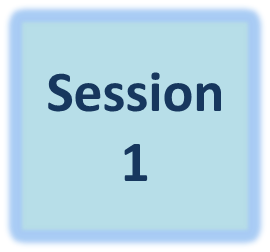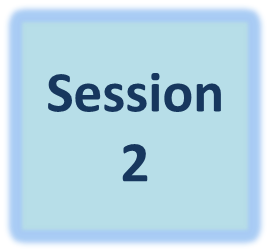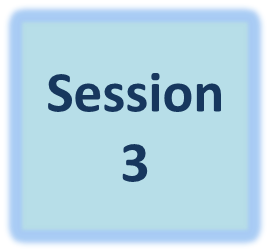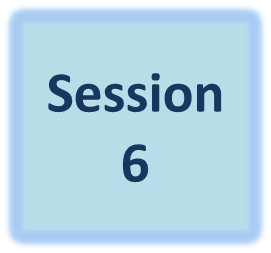Presentations
Conference Day 1
15 November, Tuesday [Conference Day 1]
Opening Ceremony
Chairs: Dr. James Purdom, Mr. Kotaro BESSHO[JMA]
| JST |
UTC |
No. |
Title |
Presenter |
Download |
| 9:00-9:05 |
0:00-0:05 |
Welcoming Remarks from JMA |
| 9:05-9:10 |
0:05-0:10 |
Welcoming Remarks from WMO |
| 9:10-9:15 |
0:10-0:15 |
Welcoming Remarks from ICSC co-chair |
Session 1: Space program and data access updates
Chairs: Mr. Kotaro BESSHO[JMA], Dr. James Purdom[ICSC-chair]
| JST |
UTC |
No. |
Title |
Presenter |
Download |
| 9:15-9:35 |
0:15-0:35 |
S1-01 |
Advancing the WMO WIGOS Vision for 2040 |
Dr. Ken Holmlund |
WMO |

 |
| 9:35-9:55 |
0:35-0:55 |
S1-02 |
Utilisation of satellite data at the Bureau |
Ms. Agnes Lane |
BOM |

 |
| 9:55-10:15 |
0:55-1:15 |
S1-03 |
Status of FengYun Satellite Program and Future Development |
Mr. XIAN Di |
CMA |

 |
| 10:15-10:35 |
1:15-1:35 |
S1-04 |
EUMETSAT in action eyes to check the pulse of Earth |
Dr. Paolo Ruti |
EUMETSAT |

 |
| 10:35-10:55 |
1:35-1:55 |
S1-06 |
Status of Himawari-8/9 and their follow-on satellite program |
Mr. Kotaro BESSHO |
JMA |

 |
| 10:55-11:15 |
1:55-2:15 |
S1-07 |
KMA’s Current Activities on GK2A and Future Satellite Program |
Mr. Sung-Rae Chung |
KMA |

 |
| 11:15-11:35 |
2:15-2:35 |
S1-08 |
NOAA: Current and Future Satellite Systems |
Ms. Irene Parker |
NOAA/NESDIS |

 |
session 2: JAXA's coordinated efforts for the earth observation for environmental monitoring
Chairs: Dr. Takuji Kubota[JAXA], Ms. Misako Kachi[JAXA]
| JST |
UTC |
No. |
Title |
Presenter |
Download |
| 13:15-13:35 |
4:15-4:35 |
S2-01 |
JAXA Earth Observation Overview |
Dr. Riko Oki |
Japan Aerospace Exploration Agency (JAXA) |

 |
| 13:35-13:50 |
4:35-4:50 |
S2-02 |
Cooperation for use of satellite data between JMA and JAXA |
Mr. Yasuhiko Sumida |
Japan Meteorological Agency |

 |
| 13:50-14:05 |
4:50-5:05 |
S2-03 |
Greenhouse gases observation from space by GOSAT series satellites since 2009 |
Dr. Akihiko Kuze |
GOSAT and GOSAT-2
Japan Aerospace Exploration Agency |

 |
| 14:05-14:20 |
5:05-5:20 |
S2-04 |
Aerosol data assimilation with data from multiple space-borne observation platforms |
Prof. Keiya Yumimoto |
Research Institute for Applied Mechanics, Kyushu University |

 |
| 14:20-14:35 |
5:20-5:35 |
S2-05 |
Evaluation and Comparison of Long-term Total Precipitable Water Products by the GCOM-W/AMSR2 |
Mr. Keiichi Ohara |
Japan Aerospace Exploration Agency
Earth Observation Research Center |

 |
| 14:35-14:50 |
5:35-5:50 |
S2-06 |
Recent progresses of the Global Satellite Mapping of Precipitation (GSMaP) Products |
Dr. Takuji Kubota |
Japan Aerospace Exploration Agency (JAXA) |

 |
| 14:50-15:05 |
5:50-6:05 |
S2-07 |
High Resolution GSMaP with Himawari |
Mr. Tomoo Ushio |
Osaka University |

 |
| 15:05-15:20 |
6:05-6:20 |
S2-08 |
Extreme Weather Bulletin and Emergency Observation/Mapping
Activities of the Manila Observatory |
Ms. Jezleer Tymico Montajes |
Senior RS-GIS Specialist, Geomatics for
Environment and Development, Manila Observatory |

 |
Conference Day 2
16 November, Wednesday
Session 3: Space weather
Chairs: Dr. Oh Daehyeon[NMSC/KMA], Dr. Zhao Ming-Xian[NSMC/CMA]
| JST |
UTC |
No. |
Title |
Presenter |
Download |
| 9:00-9:20 |
0:00-0:20 |
S3-01 |
Update of National and International Activities for Space Weather Research and Operation |
Dr. Mamoru ISHII |
NICT |

 |
| 9:20-9:35 |
0:20-0:35 |
S3-02 |
A New Index to Describe the Response of Geomagnetic Disturbance to the Energy Injection from the Solar Wind |
Dr. Zhao Ming-Xian |
National Satellite Meteorological Center (National Center for Space Weather) |

 |
| 9:35-9:50 |
0:35-0:50 |
S3-03 |
The Frequency-Domain Characterization of Cosmic Ray Intensity Variations Before Forbush Decreases Associated with Geomagnetic Storms |
Ms. Ye Qian |
the China Meteorological Administration |

 |
| 9:50-10:05 |
0:50-1:05 |
S3-04 |
Energetic Electron Flux Measurements using KSEM PD on GeoKompsat-2A |
Dr. Oh Daehyeon |
National Meteorological Satellite Center (NMSC) |

 |
| 10:05-10:20 |
1:05-1:20 |
S3-05 |
Radiation exposure estimation and information service using the Korean Radiation Exposure Assessment Model for aviation route dose (KREAM) |
Ms. Lee Dong-Hee |
National Meteorological Satellite Center, Korea Meteorological Administration |

 |
| 10:20-10:35 |
1:20-1:35 |
S3-06 |
Three-dimensional Propagation of the Global Extreme-ultraviolet Wave Associated with a Solar Eruption on 2021 October 28 |
Dr. Hou Zhenyong |
Peking University, Beijing, China |

 |
Session 4: Application for atmospheric monitoring and nowcasting
Chairs: Dr. Moeka Yamaji[JAXA]
| JST |
UTC |
No. |
Title |
Presenter |
Download |
| 10:35-10:55 |
1:35-1:55 |
S4-01 |
Satellite analysis and nowcasting applications in KMA NMSC: present and future |
Dr. Jinho Shin |
National Meteorological Satellite Center(NMSC) Korea Meteorological Administration(KMA) |

 |
Session 4 (parallel 1)
Chairs: Dr. Moeka Yamaji[JAXA], Dr. Huang Allen[SSEC/CIMSS, UW-Madison]
| JST |
UTC |
No. |
Title |
Presenter |
Download |
| 12:00-12:15 |
3:00-3:15 |
S41-01 |
Facilitating Exploitation of International LEO/GEO Meteorological Satellite Observing Systems Through Community Satellite Processing Package (CSPP) |
Dr. Allen Huang |
SSEC/CIMSS, UW-Madison |

 |
| 12:15-12:30 |
3:15-3:30 |
S41-02 |
FY-3E EM satellite performance and application on orbit at first year |
Dr. Xiuqing HU Hu |
National Satellite Meteorological Center |
 |
| 12:30-12:45 |
3:30-3:45 |
S41-03 |
Pre-Operational Validation of AHI on Himawari-9, in navigation and calibration. |
Ms. Mayu Sumita |
Meteorological Satellite Center of Japan Meteorological Agency |

 |
| 12:45-13:00 |
3:45-4:00 |
S41-04 |
Pre-Operational Validation of AHI on Himawari-9, in level 2 products. |
Mr. Shin Koyamatsu |
Meteorological Satellite Center of Japan Meteorological Agency |

 |
| 13:00-13:15 |
4:00-4:15 |
S41-05 |
Introduction of JMA’s satellite-based nowcasting products |
Mr. Shiro Omori |
Japan Meteorological Agency |

 |
| 13:15-13:30 |
4:15-4:30 |
S41-06 |
Satellite Meteorology Training in WMO RA V during 2021/2022: The Australian VLab Centre of Excellence experience |
Mr. Bodo Ivar Zeschke |
Australian Bureau of Meteorology Training Centre (BMTC) |

 |
| 13:30-13:45 |
4:30-4:45 |
S41-07 |
Recent activities of the International Precipitation Working Group (IPWG) |
Dr. Takuji Kubota |
Japan Aerospace Exploration Agency (JAXA) |

 |
| 13:45-13:55 |
4:45-4:55 |
Coffee Break |
| 13:55-14:10 |
4:55-5:10 |
S41-08 |
Detection of short-lived convective clouds using geostationary satellite images |
Ms. Adinda Dara Vahada |
BMKG |

 |
| 14:10-14:25 |
5:10-5:25 |
S41-09 |
Seasonal differences of precipitation and microphysical characteristics over the Asian monsoon region using spaceborne dual-frequency precipitation radar |
Dr. Moeka Yamaji |
Earth Observation Research Center,
Japan Aerospace Exploration Agency |

 |
| 14:25-14:40 |
5:25-5:40 |
S41-10 |
Introduction of confidence flags to the Himawari-8 precipitation estimation algorithm |
Dr. Hitoshi Hirose |
Japan Aerospace Exploration Agency (JAXA) |

 |
| 14:40-14:55 |
5:40-5:55 |
S41-11 |
Precipitation estimation using Himawari-8 in Vietnam |
Dr. An Hung Nguyen |
Le Quy Don Technical University |

 |
| 14:55-15:10 |
5:55-6:10 |
S41-12 |
Intercomparison of operational precipitation products in Vietnam |
Mr. Giacomo Roversi |
(1) Department of Physics and Astronomy, University of Bologna, Italy
(2) Institute of Atmospheric Sciences and Climate (ISAC), National Research Council (CNR), Rome, Italy |

 |
| 15:10-15:25 |
6:10-6:25 |
S41-13 |
The current status and the future plans of WMO Observing System Capability Analysis and Review Tool for space-based capabilities (OSCAR/Space) |
Mr. Heikki Pohjola |
WMO |

 |
| 15:25-15:40 |
6:25-6:40 |
S41-14 |
Parallax correction methods and objective detection of overshooting cloud tops surrounding extreme weather events location In Indonesia |
Mr. Bony Septian Pandjaitan |
Sud division for Weather Satellite Imagery Management
Indonesia Agency for Meteorology Climatology and Geophysics |

 |
Session 4 (parallel 2)
Chairs: Ms. Suling Ren[NSMC/CMA], Mr. SUZUE Hiroshi[JMA]
| JST |
UTC |
No. |
Title |
Presenter |
Download |
| 12:00-12:15 |
3:00-3:15 |
S42-01 |
Introduction of the Project for Enhancing Utilization of Himawari-8/9 Data
- Rapidly Developing Cumulus Area (RDCA) Determination - |
Mr. Hiroshi Suzue |
Japan Meteorological Agency |

 |
| 12:15-12:30 |
3:15-3:30 |
S42-02 |
Cumulonimbus Cloud Prediction Using Rapidly Developing Cumulus Area (RDCA) Products At Ambon Pattimura Airport |
Ms. Ayufitriya |
Indonesia Agency for Meteorology Climatology and Geophysics
(BMKG), State College Of Meteorology Climatology And Geophysics (STMKG) |

 |
| 12:30-12:45 |
3:30-3:45 |
S42-03 |
Investigation of severe hailstorm over northwest India during 2020-
A satellite perspective |
Mr. Shibin Balakrishnan |
Scientist-C, India Meteorological Department, Ministry of Earth Sciences |
 |
| 12:45-13:00 |
3:45-4:00 |
S42-04 |
Convective Initiation Analysis using Day Cloud Phases Distinction RGB on Tropical Region |
Mr. Rion Suaib Salman |
State College Of Meteorology Climatology And Geophysics (STMKG) |

 |
| 13:00-13:15 |
4:00-4:15 |
S42-05 |
ProbSevere LightningCast Probabilities over Guam using Himawari imagery |
Dr. Scott Shipman Lindstrom |
UW-Madison Space Science and Engineering Center (SSEC), Cooperative Institute for Meteorological Satellite Studies (CIMSS) |

 |
| 13:15-13:30 |
4:15-4:30 |
S42-06 |
Application of satellite remote sensing to assess springtime atmospheric aerosol loading over the South-West Asia |
Dr. Samaneh Sabetghadam |
Institute of Geophysics, University of Tehran, Iran |
 |
| 13:30-13:45 |
4:30-4:45 |
S42-07 |
Monitoring Volcanic Emissions with a GEO-LEO Fusion Approach |
Dr. W. Paul Menzel |
CIMSS/SSEC/UW |

 |
| 13:45-13:55 |
4:45-4:55 |
Coffee Break |
| 13:55-14:10 |
4:55-5:10 |
S42-08 |
A census of deep volcanic eruptions in the tropics as observed by Himawari-8 |
Dr. Chris Lucas |
Australian Bureau of Meteorology |

 |
| 14:10-14:25 |
5:10-5:25 |
S42-09 |
Development of fog convergence technology and Application for road weather service based on geostationary meteorological satellites |
Mr. Hancheol Lim |
Satellite Planning Division, NMSC, KMA |

 |
| 14:25-14:40 |
5:25-5:40 |
S42-10 |
Development and validation of the cirrus cloud mask method by using near infrared band observed from geostationary satellite. |
Mr. Takuma Yamaguchi |
Faculty of Engineering Sciences, Interdisciplinary Graduate School of Engineering Sciences, Kyushu University |

 |
| 14:40-14:55 |
5:40-5:55 |
S42-11 |
Retrieval and Evaluation of Atmospheric Temperature and Humidity Profiles using Geostationary Hyperspectral Infrared Sounder |
Ms. Hye-In Park |
Researcher, National Meteorological Satellite Center/KMA |

 |
| 14:55-15:10 |
5:55-6:10 |
S42-12 |
FY-4A/GIIRS Temperature Validation in Winter and Application in Cold Wave Monitoring |
Ms. Suling Ren |
National Satellite Meteorological Center |

 |
| 15:10-15:25 |
6:10-6:25 |
S42-13 |
Creating new ways to view LEO Satellite observations of winds and waves |
Dr. Scott Shipman Lindstrom |
UW-Madison Space Science and Engineering Center (SSEC), Cooperative Institute for Meteorological Satellite Studies (CIMSS) |

 |
| 15:25-15:40 |
6:25-6:40 |
S42-14 |
Tropopause folds measured by Fengyun-4: Preliminary validation and their relation to hazard weather events |
Dr. Yi-Xuan SHOU |
National Satellite Meteorological Center |

 |
| 15:40-15:55 |
6:40-6:55 |
S42-15 |
Operational application of deep learning model for auto-detection of atmospheric gravity waves over the Asia-Pacific region |
Mr. Ying Wa Chan |
Hong Kong Observatory |

 |
Conference Day 3
17 November, Thursday
Session 5: Application for land surface, sea surface, and climate monitoring
Chairs: Prof. Yuriy Kuleshov[BoM/RMIT], Dr. Pallavi Govekar[BoM]
| JST |
UTC |
No. |
Title |
Presenter |
Download |
| 9:00-9:20 |
0:00-0:20 |
S5-01 |
NOAA’s New Strategic and Implementation Plans in Response to the Climate Crisis |
Dr. Mitch Goldberg |
NOAA |

 |
| 9:20-9:35 |
0:20-0:35 |
S5-02 |
Mapping the Global Agricultural Drought with Chinese Meteorological Satellite Data |
Prof. Jinlong Fan |
National Satellite Meteorological Center |

 |
| 9:35-9:50 |
0:35-0:50 |
S5-03 |
Evolution, validation and application of Land Surface Temperature product on FY-3 Polar orbit Meteorological Satellite |
Prof. Lixin Dong |
1 Key Laboratory of Radiometric Calibration and Validation for Environmental Satellites, 2 National Satellite Meteorological Center (National Center for Space Weather), China Meteorological Administration |
 |
| 9:50-10:05 |
0:50-1:05 |
S5-04 |
The FY-3D Global Active Fire product: Principle, Methodology and Validation |
Mr. Jie Chen |
National Satellite Meteorological Center |

 |
| 10:05-10:20 |
1:05-1:20 |
S5-05 |
Introduction of FY-3/MWRI soil moisture product and its applications. |
Dr. Ruijing Sun |
National Satellite Meteorological Center |

 |
| 10:20-10:35 |
1:20-1:35 |
S5-06 |
Solar Monitoring in Australia |
Dr. Caroline Anne Poulsen |
Bureau of Meteorology |

 |
| 10:35-10:50 |
1:35-1:50 |
S5-07 |
New IMOS Himawari-8 and Multi-sensor Sea Surface Temperature products |
Dr. Pallavi Govekar |
Australian Bureau of Meteorology |

 |
| 10:50-11:05 |
1:50-2:05 |
S5-08 |
Inversion of Ocean Transparency based on FengYun meteorological Satellite |
Dr. Lin Tian |
National Satellite Meteorological Center, China Meteorological Administration, Beijing, China |

 |
| 11:05-11:20 |
2:05-2:20 |
S5-09 |
Introduction of FY-4B instruments and Results of post-launch calibration and Testing |
Dr. Zhiwei Wang |
National Satellite Meteorological Center(NSMC), China Meteorological Administration (CMA) |

 |
| 11:20-11:35 |
2:20-2:35 |
S5-10 |
WMO Space-based Weather and Climate Extremes Monitoring (SWCEM) for East Asia and Western Pacific |
Prof. Yuriy Kuleshov |
Australian Bureau of Meteorology
SPACE Research Centre, Royal Melbourne Institute of Technology (RMIT) University |

 |
| 11:35-11:50 |
2:35-2:50 |
S5-11 |
The Climate Comfort and Risk Assessment for Tourism in Bali, Indonesia |
Mr KADEK SUMAJA |
Indonesian Agency for Meteorology Climatology and Geophysics |

 |
Session 6: Application for numerical weather prediction
Chairs: Dr. Kozo Okamoto[JMA/MRI], Prof. Fuzhong Weng[CMA]
| JST |
UTC |
No. |
Title |
Presenter |
Download |
| 13:00-13:20 |
4:00-4:20 |
S6-01 |
Review of satellite radiance observations in operational numerical weather prediction |
Dr. Fiona Isobel Smith |
Bureau of Meteorology |

 |
| 13:20-13:35 |
4:20-4:35 |
S6-02 |
Assimilation of FengYun Satellite Data in CMA-GFS Using Advanced Radiative Transfer Modeling System (ARMS) |
Prof. Fuzhong Weng |
CMA Earth System Modeling and Prediction Centre |

 |
| 13:35-13:50 |
4:35-4:50 |
S6-03 |
A brief review of the current status and future requirements of satellite microwave data for NWP |
Dr. S. Indira Rani |
National Centre for Medium Range Weather Forecasting (NCMRWF), Ministry of Earth Sciences (MoES), Govt. of India |

 |
| 13:50-14:05 |
4:50-5:05 |
S6-04 |
Impact of microwave radiance assimilation over land using dynamic emissivity in the global NWP system of JMA. |
Dr. Keiichi Kondo |
Numerical Prediction Division / Meteorological Research Institute,
Japan Meteorological Agency |

 |
| 14:05-14:20 |
5:05-5:20 |
S6-05 |
Impact of Aeolus wind data assimilation on typhoon track forecasting |
Ms. Izumi Okabe |
MRI/JMA |

 |
| 14:20-14:35 |
5:20-5:35 |
S6-06 |
All-sky infrared radiance assimilation of Himawari-8 in the global data assimilation system at JMA |
Dr. Kozo Okamoto |
JMA/MRI |

 |
| 14:35-14:50 |
5:35-5:50 |
S6-07 |
Impact of clear-sky radiances at CO2 band in the JMA’s global data assimilation system |
Mr. Naoto Kusano |
Numerical Prediction Division, Japan Meteorological Agency |

 |
| 14:50-15:05 |
5:50-6:05 |
S6-08 |
Investigation of loading an infrared sounder on a geostationary satellite by the infrared sounder subcommittee of the Next Generation GEO/Mission Investigation Team (NGG/MInT) |
Prof. Ryoichi Imasu |
Atmosphere and Ocean Research Institute, The University of Tokyo |

 |
| 15:05-15:20 |
6:05-6:20 |
S6-09 |
Assimilation of hyperspectral infrared sounder radiances in the JMA’s meso-scale NWP system |
Mr. Hiroyuki Shimizu |
Numerical Prediction Division, Japan Meteorological Agency |

 |
| 15:20-15:35 |
6:20-6:35 |
S6-10 |
Observation system simulation experiments for a hyperspectral infrared sounder onboard a geostationary satellite |
Ms. Hiromi Owada |
Japan Meteorological Agency |

 |
| 15:35-15:50 |
6:35-6:50 |
S6-11 |
Mesoscale OSSE for the potential impact of a geostationary hyperspectral infrared sounder |
Dr. Tadashi Fujita |
Meteorological Research Institute, Japan Meteorological Agency |

 |
Closing Ceremony
Chairs: Dr. Allen Huang [SSEC/CIMSS, UW-Madison]
| JST |
UTC |
No. |
Title |
Presenter |
Download |
| 15:50-16:10 |
6:50-7:10 |
Closing Remarks from KMA, and ICSC co-chair |
Training Event Day 1
11 November, Friday
Opening Ceremony
Chair: Mr. Kotaro BESSHO [JMA]
| JST |
UTC |
No. |
Title |
Presenter |
Download |
| 9:00-9:05 |
0:00-0:05 |
Opening Ceremony |
| 9:05-9:20 |
0:05-0:20 |
T1 |
Keynote presentations by ICSC Chair |
Dr. James Purdom |
|
 |
| 9:20-9:35 |
0:20-0:35 |
T2 |
Keynote presentations by Co-chair of Vlab |
Dr. Bernie Connell |
|
 |
Training Event
Chairs: Mr. Wen Bo [CMATC]
| JST |
UTC |
No. |
Title |
Presenter |
Download |
| 9:35-10:50 |
0:35-1:50 |
T3 |
Training lecture from CMA |
Mr. XIAN Di |
CMA |
 |
| 10:50-11:00 |
1:50-2:00 |
Coffee Break |
| 11:00-12:15 |
2:00-3:15 |
T4 |
Training lecture from JMA |
Taro HANDA, Shiho NAIKI, Kotaro SAITO and Mayuko SAKURAI |
JMA |
 |
| 12:15-13:30 |
3:15-4:30 |
T5 |
Training lecture from KMA |
Seon-Yong LEE, Ok Hee LEE, Taekyu JANG |
KMA |
 |
Training Event Day 2
14 November, Monday
Training Event
Chairs: Mr. Kazutaka YAMADA [JMA]
| JST |
UTC |
No. |
Title |
Presenter |
Download |
| 9:00-10:00 |
0:00-1:00 |
T6 |
Satellite applications for Tropical Cyclone Analysis |
Mr. Joe Courtney |
BOM |
 |
| 10:00-11:00 |
1:00-2:00 |
T7 |
Introduction and Demonstration of the NOAA Global Flood Products |
Dr. William Straka |
NOAA |
 |
| 11:00-11:10 |
2:00-2:10 |
Coffee Break |
| 11:10-12:10 |
2:10-3:10 |
T8 |
Introduction to Rainfall Nowcasting Using Satellite Image |
Mr. Muhammad Hanif Affan Yusron |
BMKG |
 |
| 12:10-12:45 |
3:10-3:45 |
T9 |
CMATC & BOM VLab RFG Part 1 |
Mr. Bodo Zeschke
Ms. Jingmian Deng |
BMTC/CMATC |
 |
| 12:45-13:20 |
3:45-4:20 |
T10 |
CMATC & BOM VLab RFG Part 2 |
Mr. Bodo Zeschke
Ms. Jingmian Deng |
BMTC/CMATC |
 |
| 13:20-13:20 |
4:20-4:20 |
Closing Ceremony |
| 13:20-13:40 |
4:20-4:40 |
Closing Remarks from KMA, and ICSC co-chair |
Joint RA II - RA V Coordination Meeting
18 November, Friday
Chair: Mr. Kotaro BESSHO [JMA]
| JST |
UTC |
No. |
Title |
Presenter |
Download |
| 9:00-9:10 |
0:00-0:10 |
J1 |
Opening of the Meeting |
|
|
|
| 9:10-9:20 |
0:10-0:20 |
J2 |
Updates on working structure and Operating Plans of RA II/V |
Jun Yu |
WMO |
|
| 9:20-9:30 |
0:20-0:30 |
J2 |
|
Ryuji Yamada |
WMO |
|
| 9:30-9:40 |
0:30-0:40 |
J2 |
|
Yongqing Chen |
WMO |
 |
| 9:40-9:50 |
0:40-0:50 |
J3 |
RA II WIGOS Project Updates (RA II Operating Plan - RA II-17-I-IP-6 – Activity 4) Updates |
Dohyeong Kim |
KMA |
 |
| 9:50-10:10 |
0:50-1:10 |
J4 |
Global Survey on Satellite Data Utilization: RA II & RA V |
Chang LIU |
WMO |
 |
| 10:10-11:00 |
1:10-2:00 |
J5 |
Member Reports |
Bangladesh |
XIAN DI
(Chair) |

|
| Bhutan |

|
| China |

|
| Hong Kong, China |

|
| Indonesia |

|
| Myanmar |

|
| Qatar |

|
| Singapore |

|
| Thailand |

|
| Viet Nam |

|
| 11:00−11:10 |
2:00-2:10 |
Coffee Break |
| 11:10-11:30 |
2:10-2:30 |
J6 |
INFCOM/SC-ON/ET-SSU-5: outcomes of the meeting (13-15 Sept 2022) |
Fiona Smith |
BoM |
 |
| 11:30-11:40 |
2:30-2:40 |
J7 |
Reports from RAI and RAIII/IV |
Sarah Kimani |
IMTR |
 |
| 11:40-11:50 |
2:40-2:50 |
J7 |
|
Diego Souza |
INPE |
 |
| 11:50-12:00 |
2:50-3:00 |
J8 |
Training Activity |
Agnes Lane |
BoM |
 |
| 12:00-12:10 |
3:00-3:10 |
J8 |
|
Jinho SHIN |
CMA/KMA |
 |
| 12:10-12:20 |
3:10-3:20 |
J8 |
|
Nelly Florida Riama |
BMKG |
 |
| 12:20-12:40 |
3:20-3:40 |
J9 |
Future Work Plan |
|
JMA |
 |
| 12:40-12:50 |
3:40-3:50 |
J10 |
Summary & Closing |
|
JMA |
|








